Cuba << KYOO buh >> is an island nation that is the only Communist state in the Americas. It lies about 90 miles (145 kilometers) south of Key West, Florida. Havana is Cuba’s capital and largest city.
Cuba is the largest and one of the most beautiful of the islands in the Caribbean region. Towering mountains and rolling hills cover about a third of the island. The rest of Cuba consists mainly of gentle slopes and broad grasslands. Cuba has a magnificent coastline marked with deep bays, sandy beaches, and colorful coral reefs.
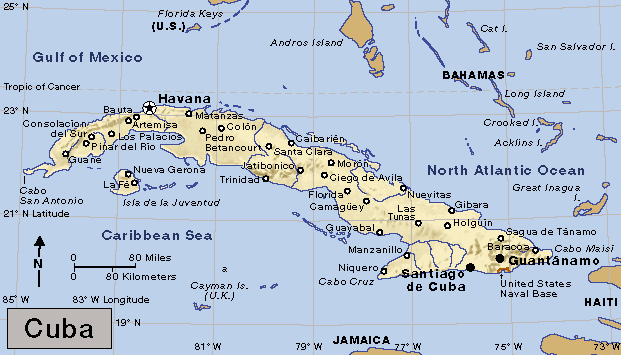
Cuba’s location has greatly influenced its history. The island lies at the intersection of major sea routes between the Atlantic Ocean, the Caribbean Sea, and the Gulf of Mexico. The explorer Christopher Columbus, sailing in the service of Spain, landed in Cuba in 1492. The island later became strategically important in Spain’s American empire.
In the late 1700’s and early 1800’s, sugar cane became Cuba’s leading crop. Sugar-cane growers of European ancestry raised their crops on large plantations that depended heavily on human labor. To provide cheap labor, growers brought thousands of Africans to Cuba and enslaved them.
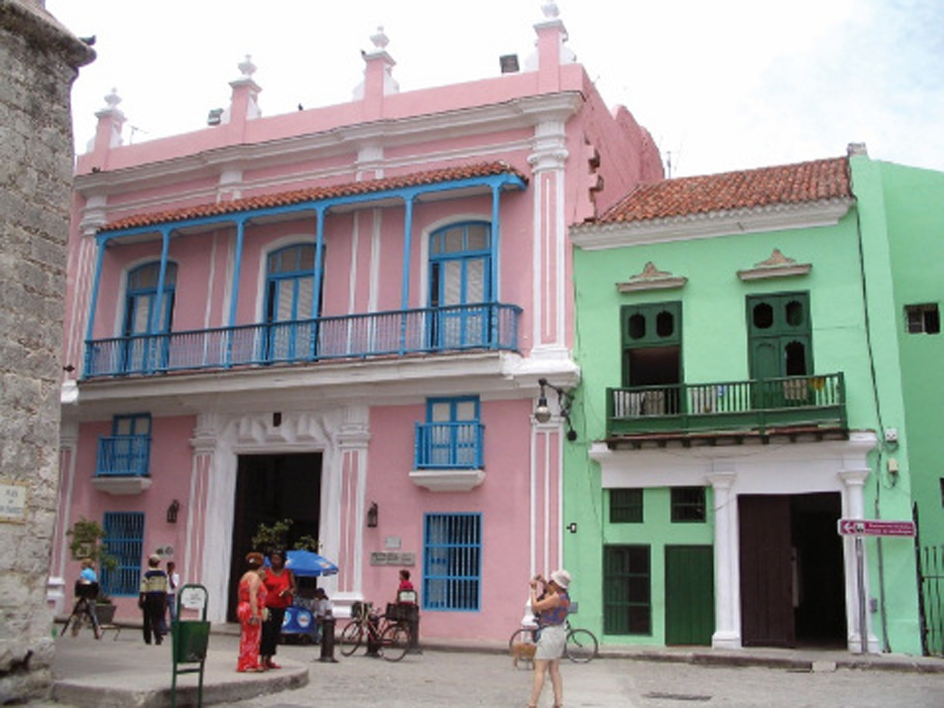
During the 1800’s, many Cubans rebelled against Spanish rule. In 1898, the United States helped defeat Spain, which then gave up all claims to Cuba. A U.S. military government ruled Cuba from 1899 to 1902, when the island became a republic. However, the United States maintained close ties with Cuba and often intervened in the island’s internal affairs. From 1934 to 1940 and from 1952 to 1959, Cuba was controlled by the dictator Fulgencio Batista y Zaldívar.
Fidel Castro led a revolution that overthrew Batista in 1959. Relations between Cuba and the United States became tense soon after the revolution. Castro set up a Communist government in the early 1960’s. He developed close ties with the Soviet Union, then the main rival of the United States in a struggle for international power. The United States opposed Castro’s early reforms. His government retaliated by taking over American property in Cuba. This resulted in the end of economic and diplomatic relations between the two countries. However, Cuba-U.S. relations improved somewhat at times during the early decades of the 2000’s.
Today, the government of Cuba is highly centralized. It provides many benefits for the people, including free medical care and free education. However, political and economic freedom is limited.
Government
According to the current Cuban Constitution, adopted in 2019, Cuba is a socialist state. It is guided by a single political party—the Partido Comunista de Cuba (Communist Party of Cuba), also known as the PCC. The Constitution recognizes the Communist Party as the leading authority in the government and society. The Party Congress, a gathering of delegates from throughout the country, meets at regular intervals. The Central Committee, an administrative body elected by the Congress, is responsible for making the highest levels of policy, and it influences all government institutions. The Central Committee elects members of a smaller group called the Political Bureau, which handles day-to-day policy and decision-making. Another small group, the Secretariat, handles daily administrative work.
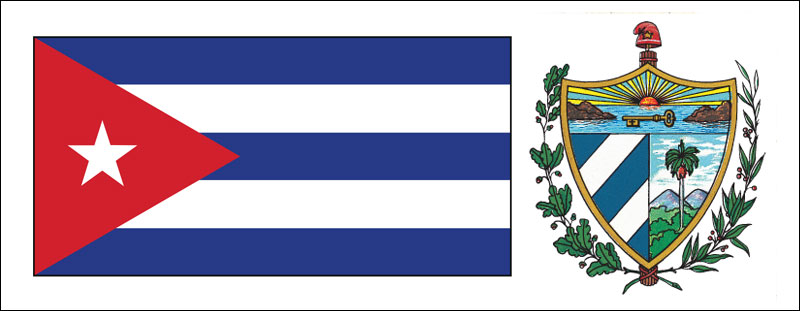
Cuba's national anthem
National government.
The National Assembly of People’s Power has been Cuba’s chief legislative body since 1976. The people elect the members of the Assembly to five-year terms. Citizens who are at least 16 years old may vote.
The National Assembly holds two regular sessions each year. Between sessions, the Assembly is represented by the Council of State and several standing commissions. Council members are elected by the National Assembly from among its members. The National Assembly also elects the president of the republic, who serves as head of state and is the most powerful government official.
The president proposes, and the National Assembly appoints, members of a Council of Ministers, which in effect serves as a cabinet. This council enforces laws, directs government agencies, and conducts Cuba’s foreign policy. According to the 2019 Constitution, the president also proposes a prime minister, who is appointed by the Assembly. The prime minister serves as head of government and directs council meetings.
Provincial and local government.
Cuba has 15 provinces, which are divided into municipalities for purposes of local government. Each municipality has an assembly whose members are elected by the people. Municipal assemblies supervise and control local economic enterprises, including retail operations and factories that produce goods for the local market. Municipal assemblies also exercise some authority over schools, health services, cultural activities, sports facilities, and transportation.
According to the 2019 Constitution, municipal assembly delegates in each province elect a governor, who is proposed by the president of the republic. The governor presides over a provincial council that includes municipal assembly leaders and municipal mayors.
Cuba’s largest offshore island, the Isla de la Juventud (Isle of Youth), does not belong to any province. It is a special municipality ruled directly by the central government.
Courts.
The People’s Supreme Court is Cuba’s highest court. It consists of a president, a vice president, and the members of the court’s six chambers (divisions). These chambers are civil and administrative, criminal, economic, labor, military, and state security. Each chamber consists of a president, at least two other professional judges, and lay judges. Lay judges are citizens who hold their regular jobs while serving on the Supreme Court. The National Assembly elects the Supreme Court justices. The president and vice president of the court are nominated by the president of the Council of State and approved by the National Assembly. Cuba also has provincial and municipal courts throughout the island.
Armed forces.
Cuba has one of the largest military forces in Latin America. The country has an air force, an army, and a navy, as well as an army reserve. Both men and women may serve voluntarily in Cuba’s armed forces. Territorial militias, civilian groups with military training, also stand ready to defend their country. In general, all Cuban men must serve two years of active military duty after they turn 17. In some cases, this requirement may be met by performing social service.
People
Ancestry and language.
Most Cubans are descendants of people who came to the island from Spain and Africa. According to official census figures, about 65 percent of the people are white, and approximately 10 percent are Black. Most of the rest are people with both European and African ancestry. Cuba also has a small percentage of people of Chinese descent. The country’s racial and social composition changed significantly between 1959 and 1980, when about 750,000 people emigrated. Most of them were white and middle-class. Spanish is Cuba’s official language.
Way of life.
The majority of Cuban people live in urban areas. Havana is Cuba’s capital, largest city, and commercial and cultural center. Most people in the cities have jobs in government agencies or government-owned businesses and factories, but some are self-employed and run small private businesses. Cuba’s cities have a serious housing shortage. Many buildings, neglected for several decades, are in need of repair. 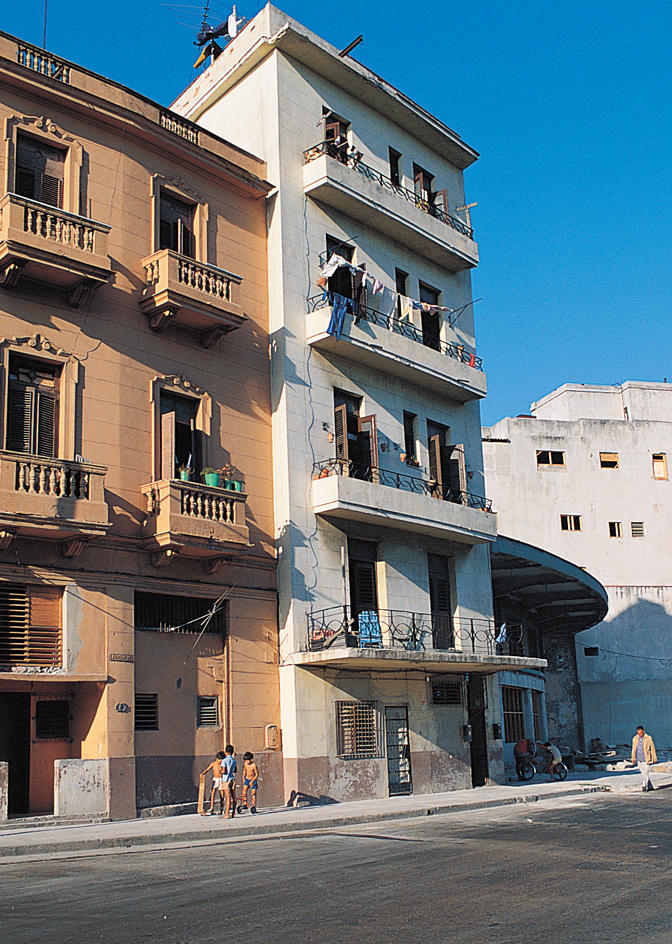
Most of the people in rural areas work on farms or in sugar mills. Some rural people live in traditional bohíos—that is, thatch-roofed dwellings with dirt floors—but such dwellings are not common.
Before the 1959 revolution, many rural communities lacked health facilities, schools, adequate transportation and communication, and housing. Since 1959, the government has built hospitals, clinics, and schools in the countryside. It also has expanded transportation and communication facilities and increased housing construction. Nearly all Cubans have access to electric power. Nevertheless, many rural areas of Cuba continue to lack certain necessities.
Food and drink.
Pork, chicken, beans, and rice are the most common Cuban foods. Rice is often served with various kinds of beans, or it is mixed with tomatoes, onions, green peppers, and chicken in a dish called arroz con pollo. Another popular dish is picadillo, which consists of ground beef, pork, or veal mixed with onions, garlic, tomatoes, and other ingredients. Corn meal is used in tamales and many other dishes. Coffee, rum, and beer are popular beverages.
In the early 1960’s, the government organized a food rationing system to deal with the limited availability of scarce and imported foods. This system, still in operation, is designed to provide all households with minimum quantities of rice, beans, meat, chicken, eggs, sugar, milk, and coffee.
Recreation.
Cubans are enthusiastic sports fans. Baseball arrived in Cuba from the United States in the mid- to late 1800’s and quickly became the island’s national pastime. Other popular sports include basketball, boxing, swimming, track and field, and volleyball. Soccer also has a growing national following. 
Religion.
The Roman Catholic Church is the largest church in Cuba. Many Cubans also believe in Santería and other such religions that combine traditional African religious beliefs with Roman Catholic ceremonies. Protestant groups with widespread membership in Cuba include Methodists, Baptists, and Presbyterians. Spiritualism, the belief that the spirits of the dead can communicate with the living, is common in many areas. A small Jewish community is concentrated mostly in Havana.
Education.
Cuba has one of the most extensive networks of schools in Latin America. All Cubans from the ages of 6 to 14 are required to attend school. Education is free. The government’s Literacy Campaign of 1961 reduced illiteracy from 23 percent to about 4 percent. Today, nearly all Cuban adults can read and write.
Cuba has dozens of universities and university-level educational institutions. The most important include the University of Havana, the University of Oriente in Santiago de Cuba, the Central University “Marta Abreu” of Las Villas in Santa Clara, and the University of the Arts (Higher Institute of Art) in Havana. In the early 2000’s, the government completed a plan to build a university branch in every municipality.
The arts.
Cuba has a distinguished tradition and broad public participation in the arts. The Cuban government strongly supports the arts and sponsors free ballets, plays, and other cultural events for Cubans. The work of the government-sponsored Cuban Institute of Cinematographic Art and Industry has made Cuba a center of the Latin American film industry. The Casa de las Américas (House of the Americas), which supports the work of artists, writers, and musicians, is one of Latin America’s most prestigious cultural institutions.
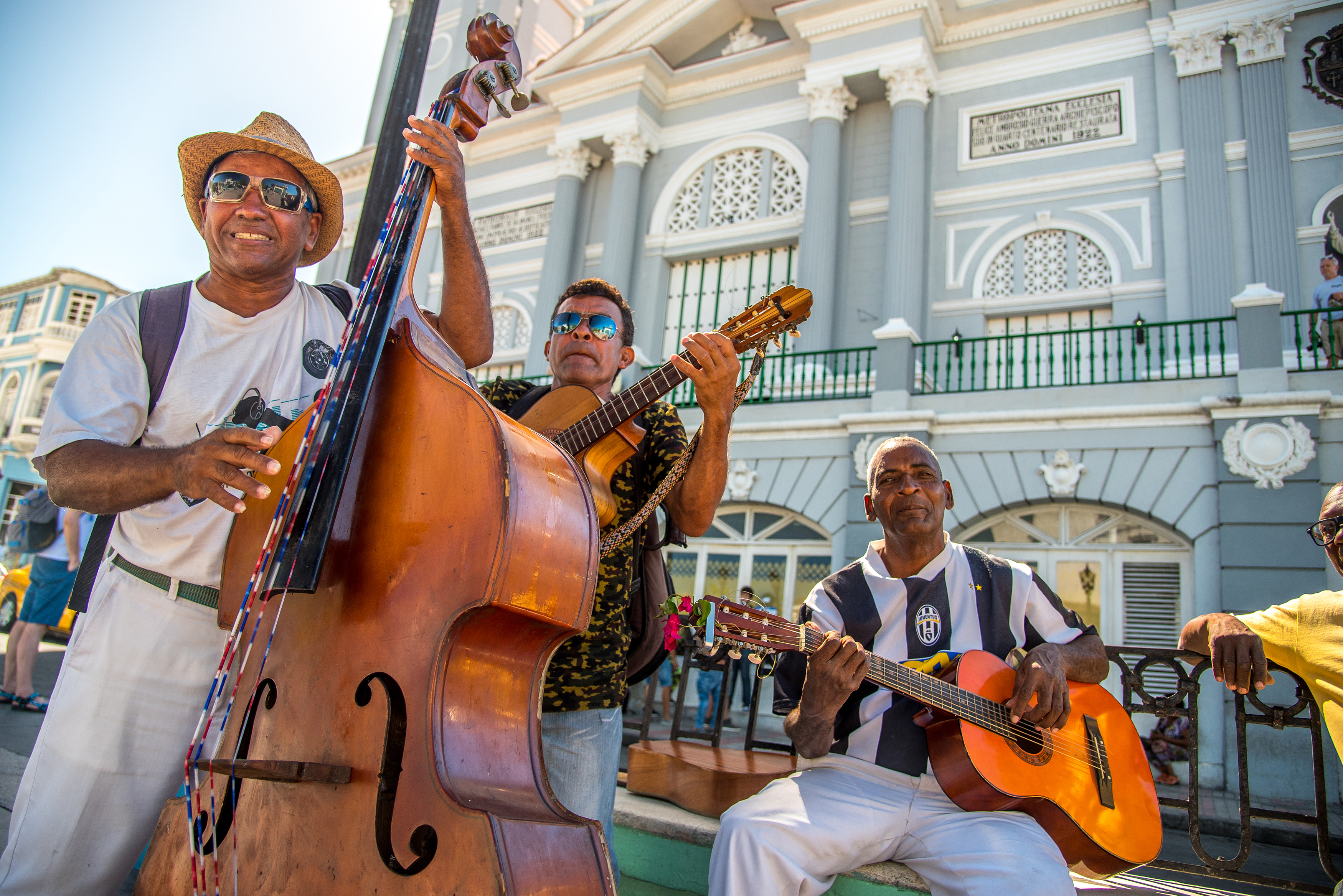
Cuban paintings are known primarily for their strong colors and portrayals of dramatic actions. Armando Menocal, who began painting in the late 1800’s, became famous for his murals and depictions of historical events. Well-known Cuban painters of the 1900’s include Amelia Peláez, René Portocarrero, and Wifredo Lam. Peláez pioneered the introduction of Modern art in Cuba. Portocarrero and Lam combined African and Cuban elements in their works.
José Martí was the most famous Cuban writer of the 1800’s, and one of Latin America’s best-known poets. Martí wrote eloquently on political subjects. Beginning in the 1880’s, he led Cuba’s fight for independence from Spain. The most prominent Cuban novelists of the early and middle 1900’s included Alejo Carpentier and José Lezama Lima. Carpentier produced works in the style of magic realism, which blends dreams and magic with everyday reality. Lezama wrote poetry and literary reviews. Guillermo Cabrera Infante became one of Cuba’s best-known novelists and short-story writers of the late 1900’s. His innovative works of fiction are filled with many kinds of wordplay. In the early 2000’s, Leonardo Padura became widely known for his detective novels.
Since 1961, the government has encouraged the reading of literature through various campaigns and by making inexpensive books available. The Havana International Book Fair, first held in 1982, travels around the island every year.
Loading the player...
Cuban traditional dance music
Cuban popular music has gained worldwide renown. This highly rhythmic music combines African and European, especially Spanish, traditions. Much Cuban music features guitars and such percussion instruments as castanets, maracas, and a variety of drums, including bongo drums. Cuban music has given rise to a number of dances, including the cha-cha-cha, conga, mambo, rumba, son, Cuban bolero, and salsa.
The land
Cuba consists of a main island (Cuba) surrounded by more than 1,600 smaller islands. The Cuban mainland extends about 710 miles (1,150 kilometers) from northwest to southeast. At its widest point, the island measures 135 miles (217 kilometers). At its narrowest point, it reaches only about 20 miles (32 kilometers).

Cuba consists mainly of three mountainous regions separated by gentle slopes, rolling plains, and wide, fertile farmlands. The three mountainous regions rise in the west, in south-central Cuba, and in the southeast.
The westernmost mountainous region of Cuba consists of two mountain ranges—the Sierra de los Órganos and the Sierra del Rosario. The south-central mountainous region is known as the Sierra de Escambray. It includes the Sierra de Trinidad and the Sierra de Sancti Spíritus ranges. The southeastern mountainous zone has several ranges. Among them is the Sierra Maestra range, which rises abruptly from the southeastern coast. The highest point in Cuba, the Pico Turquino, stands 6,578 feet (2,005 meters) high in the Sierra Maestra.
Cuba has more than 200 rivers and streams. Most of them are short, narrow, and shallow. Few inland waterways on the island can be navigated for any great distances. The longest river, the Cauto, flows about 150 miles (240 kilometers) through southeastern Cuba. It is navigable for only about 40 miles (65 kilometers).
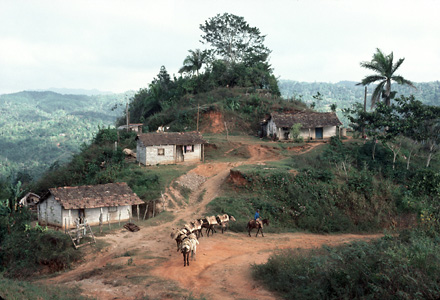
The coastline of Cuba is marked with deep bays and sandy beaches. Much of the southern shoreline of Cuba in the west consists of a band of low marshland that is broken up into hundreds of coral keys and mangrove swamps. Coral keys are low islands that form when coral growths build up above the water. Mangrove swamps are created when the spreading roots of mangrove trees catch and hold soil. West of Cienfuegos lies the Zapata Peninsula, a vast swampland.
Cuba has over 200 natural harbors along its shoreline. The larger harbors have narrow entrances, which protect the inner area against winds and waves. Important northern harbors include Antilla, Cabañas, Cárdenas, Gibara, Havana, Honda, Manatí, Mariel, Matanzas, Nuevitas, and Puerto Padre. The chief southern harbors include Cienfuegos, Guantánamo, and Santiago de Cuba.
Climate
Cuba lies within the northern tropics and has a semitropical climate. Cool ocean breezes during the summer and warm breezes in the winter give the island a mild climate throughout the year. Average daily temperatures in Cuba range from about 70 °F (21 °C) in winter to about 80 °F (27 °C) in summer. The interior has a greater temperature range than the coastal regions. Temperatures on the island rarely fall below 40 °F (4 °C) or rise above 100 °F (38 °C). Frosts sometimes occur in the mountains.
Cuba has dry and rainy seasons. The dry season lasts from November through April, and the rainy season runs from May through October. Cuba has an average annual rainfall of more than 50 inches (125 centimeters). Thunderstorms occur almost daily in the rainy season.
Hurricanes frequently strike the island, especially its eastern and western tips. Hurricane season lasts from June to November. The strong winds from hurricanes occasionally destroy buildings and crops and create high waves that flood the coastal lowlands. Earthquakes also occasionally hit Cuba. They occur most frequently and most severely along the southeastern coast.
Economy
Cuba has a gross domestic product (GDP) of about $100 billion. A country’s GDP is the total value of all goods and services the country produces in a year.
From 1961 to the early 1990’s, government planning dominated key economic decisions in Cuba. A U.S. trade embargo (suspension of trade) imposed in 1960 contributed to the stagnation of Cuba’s economy during this period. As a result, Cuba relied heavily on aid from, and trade with, the Soviet Union and other Communist nations.
Communism collapsed in Eastern Europe during the late 1980’s, and the Soviet Union broke apart in 1991. These political changes resulted in a loss of trade for Cuba. To combat the economic crisis brought on by this loss, the Cuban government loosened its control over the economy. Foreign investment, previously discouraged by the government, began to return to the island, mainly in the tourist industry. In 1993, Cuba began to permit limited private enterprise consisting of self-employment. Since then, Cuba has increasingly allowed more private businesses.
Manufacturing
traditionally centered on sugar production, but about half of Cuba’s sugar mills closed in the early 2000’s as a result of decreased sugar prices. The manufacture of cigars is also important. Cuba is famous for fine hand-rolled cigars made from high-quality tobacco. Most cigar factories are in Havana. Other important industrial products include cement products, food and beverage products, petroleum, pharmaceuticals (medicinal drugs), and steel. 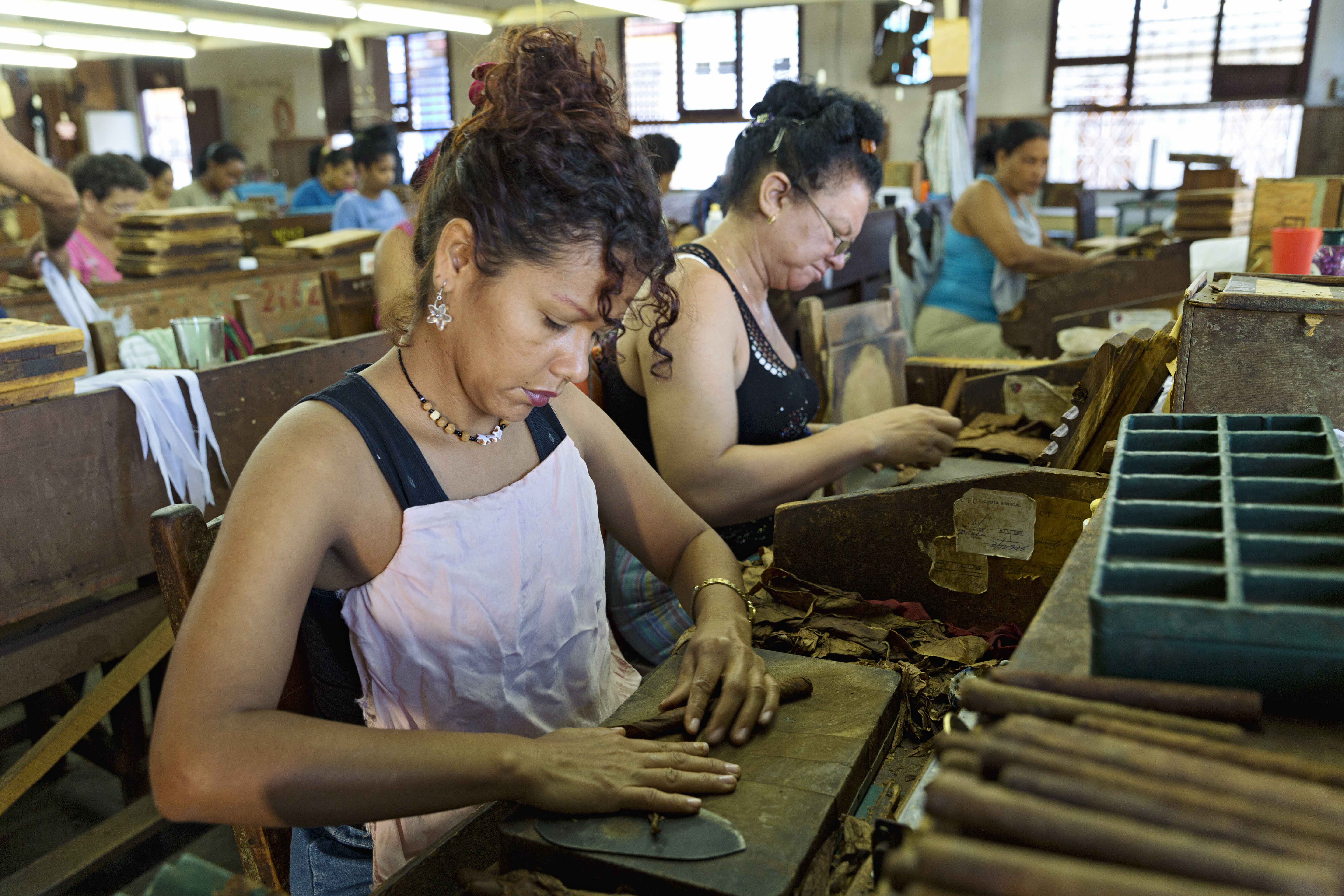
Agriculture.
Sugar cane historically has been Cuba’s most important crop. Although Cuba’s sugar production has decreased significantly since the late 1900’s, the country is still an important sugar producer. Coffee and tobacco are also important crops.

Through the years, the government has promoted attempts to grow other crops as a way for the country to supply more of its own food. As part of these efforts, the government has increased the production of bananas, beans, citrus fruits, rice, and tomatoes. Livestock farming, particularly the raising of beef and dairy cattle, chickens, and hogs, is also important.
In the 1960’s, about three-fourths of Cuba’s farmland came under state control. Most farms were run as state farms, owned and operated by the government. Others were reorganized and operated as farm cooperatives, owned jointly by the government and groups of farmers. Some small farms remained under the control of individual owners, producing chiefly coffee and tobacco. In all cases, farmers were required to sell their products to the state at prices set by the government.
In the early 1990’s, the government distributed more state lands to cooperatives and authorized farmers to sell their surplus production on the open market after certain quotas had been met. Soon, small farmers’ markets sprang up across the island to sell a variety of products directly to the public. Cuba’s armed forces also manage farms throughout the island and are a major producer of food.
Mining.
Cuba’s mined products include cement, clays, cobalt, feldspar, limestone, natural gas, and nickel. Most of the nickel mines are on the eastern end of the island. Cuba also produces small but growing quantities of petroleum, which accounts for much of its energy production. 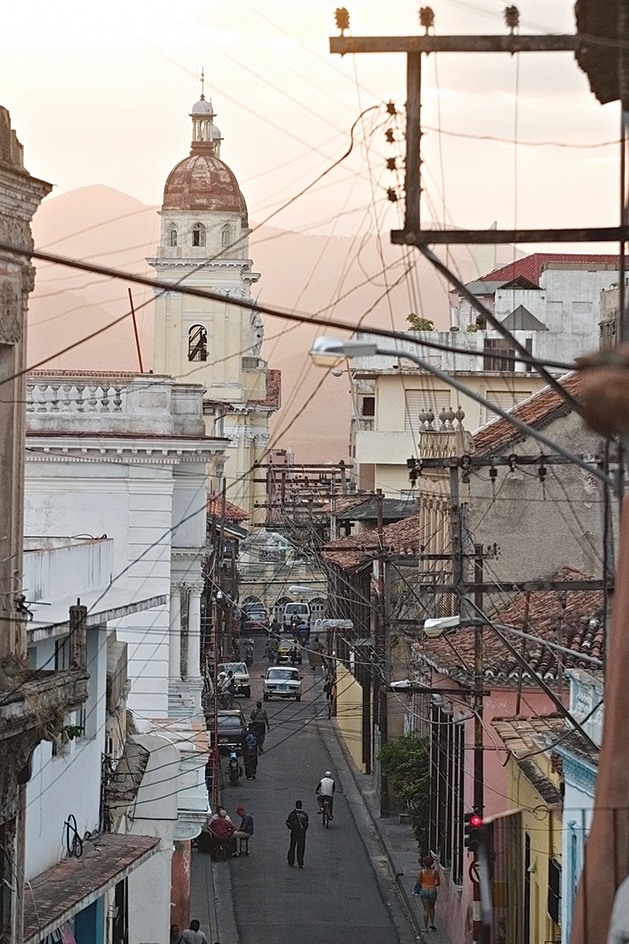
Fishing industry.
Cuban fishing fleets range over the Caribbean Sea and parts of the North Atlantic Ocean. The important catches include herring, lobsters, shrimp, snapper, and tilapia.
Service industries
account for about two-thirds of Cuba’s employment and about three-fourths of its GDP. One of Cuba’s fastest-growing service industries is tourism. The Cuban government has formed joint ventures with foreign investors to build new hotels and to restore old ones. Tourists have arrived in growing numbers, mainly from Canada and Europe.
International trade.
From the late 1880’s to 1960, Cuba’s principal trading partner was the United States. Beginning in the early 1960’s, especially after U.S. sanctions were imposed, Cuban trade shifted largely to the Soviet Union and the Communist countries of Eastern Europe. By the mid-1980’s, about 85 percent of all Cuban trade was with these Communist nations. The collapse of Communism in these nations left Cuba in search of new trading partners. Today, Cuba’s chief trading partners include Brazil, Canada, China, Germany, Italy, Mexico, the Netherlands, Russia, Spain, and Venezuela.
Cuban exports include coffee, fish and shellfish, medical products, nickel, rum, sugar, and tobacco products. Among Cuba’s chief imports are machinery, petroleum, and wheat and other food products.
Transportation and communication.
About half of Cuba’s roads are paved. The Central Highway extends between Pinar del Río, in the northwest, and Santiago de Cuba, in the southeast. However, gasoline rationing, a scarcity of new vehicles, problems in obtaining spare parts, and poor road surfaces often have made automobile transportation difficult. Railroads cross the island, but more people ride buses than trains. José Martí International Airport is the country’s largest airport.
Cuba’s principal daily newspaper is Granma, published by the Cuban Communist Party. The Communist Party controls the country’s newspapers and television and radio stations.
History
Early years.
The explorer Christopher Columbus landed in Cuba in 1492. At the time of Columbus’s arrival, three groups of Indigenous (native) people inhabited the island. They were the Guanahatabey, the Ciboney, and the Taíno. Estimates of the size of the Indigenous population at the time of European arrival vary widely, from as few as 16,000 to as many as 600,000.
Spanish soldiers and priests arrived in Cuba in 1511. The Indigenous people resisted the Spanish effort to take over the island but soon were defeated. The Spaniards then forced the Indigenous people to work in agriculture and mining. Many Indigenous people died from diseases and harsh treatment. By the mid-1500’s, only a few thousand remained. As the Indigenous population declined, the Spaniards brought Africans to Cuba and enslaved them. The trade in enslaved Africans began in Cuba during the 1520’s but remained relatively limited until the late 1700’s.
The island became strategically important to the Spanish colonial system in the New World. Control of Cuba offered Spain command of sea routes to Mexico, the Gulf Coast, western Florida, and Central America, as well as the chief shipping lanes of the Caribbean Sea. In 1564, Spain officially introduced its fleet system. Under this system, merchant vessels carrying treasure from the New World sailed together in groups called convoys, which were protected by warships. Havana became the gathering place for the treasure ships before they set sail in convoys for Spain. Havana soon emerged as the island’s political, administrative, economic, and cultural hub.
In 1762, the British seized Havana during the Seven Years’ War, known in the United States as the French and Indian War. During their occupation, the British introduced reforms and established new trade ties between Cuba and the British colonies of North America, thus creating new, larger markets for Cuban sugar. The British also brought several thousand enslaved Africans from Jamaica, then a British colony.
The British returned control of Havana to Spain in 1763. After the restoration of Spanish rule, Spain eased trade restrictions, abolished duties on Cuban imports, and opened Cuban ports to unlimited trade in enslaved people. These actions helped the Cuban economy flourish.
In the late 1700’s, a Black slave rebellion in the French colony of Saint-Domingue (now Haiti) destroyed the production of sugar and coffee there. About the same time, the world price of these products soared. In response, Cuban producers soon launched coffee production in eastern Cuba and expanded sugar cane cultivation throughout the island.
Through the years, sugar emerged as the most important Cuban export. Expanding sugar production led to the desire for more cheap labor. As a result, tens of thousands of Africans were brought to the island and enslaved. Many owners treated enslaved people brutally. In 1812, a group of enslaved people headed by José Antonio Aponte planned a revolt. The Spaniards discovered the plot and hanged Aponte and his followers.
Struggle against Spain.
By the mid-1820’s, nearly all of Spain’s colonies in Latin America had won their independence. Various Cuban groups sought to end Spanish rule of their country as well. However, most of the island’s white sugar-growing elite people preferred to remain under Spanish rule to guarantee their wealth and a supply of slave labor.
During the mid-1800’s, some Cubans and Americans supported a movement to annex (join) Cuba to the United States. The annexation movement received much support from Cuban and American slaveholders. Other groups in Cuba and the United States favored American control of the island for economic and military reasons. The United States made three offers to buy Cuba, but Spain rejected them.
Cuba’s struggle against Spanish rule led to the start of the Ten Years’ War in 1868. Carlos Manuel de Céspedes, a landowner, headed a revolutionary group made up largely of poor sugar planters, multiracial people, free Black people, and enslaved people. The rebels wanted independence from Spain, the founding of a republic, and the gradual freeing of enslaved people. Spain rejected these demands, and bitter fighting followed.
The Ten Years’ War ended with the signing of the Pact of Zanjón in 1878. This treaty provided for political reforms and for the liberation of enslaved people who had joined the rebel army. A second unsuccessful rebellion against Spanish rule broke out in August 1879. Known as the Little War, it lasted until late 1880. A royal decree of 1886 finally ended the institution of slavery in Cuba.
In 1892, largely due to efforts by the exiled writer José Martí, the Cuban Revolutionary Party was organized. It united Cuban separatists in both Cuba and the United States. In 1895, these separatists launched a new war for Cuban independence.
President William McKinley of the United States claimed that the fighting in Cuba threatened American interests. He told Spain’s government to either change its policy toward Cuba or give up the island completely. In February 1898, the U.S. battleship Maine, which had been sent to Havana to protect Americans in Cuba, exploded mysteriously. The United States blamed the Spaniards and, in April, declared war on Spain. This war became known in the United States as the Spanish-American War. In Cuba, the war that was fought from 1895 to 1898 is called the Spanish-Cuban-American War. 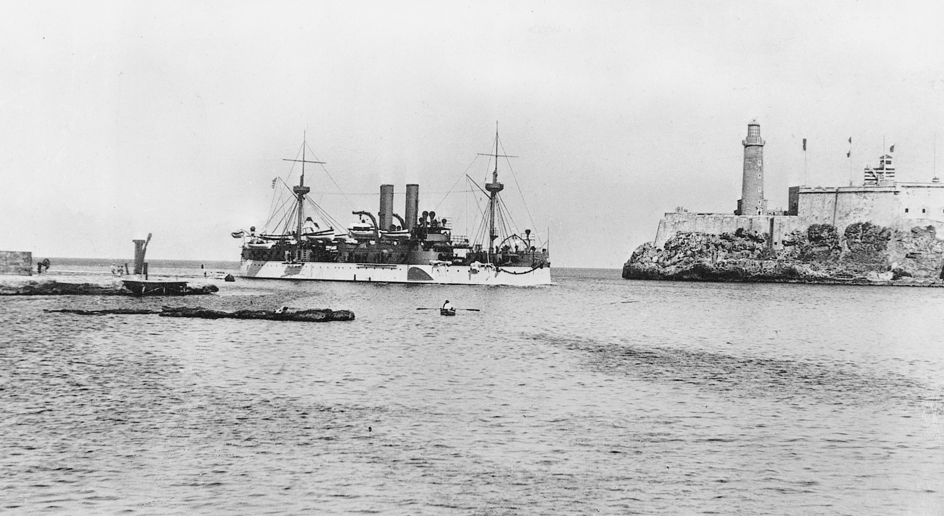
The U.S. intervention delivered the final blow to the Spanish army in Cuba. The Spaniards surrendered in July 1898, and an armistice in August ended the fighting. Under the Treaty of Paris, signed by the United States and Spain on December 10, Spain gave up all rights to the island. The United States then set up a military government in Cuba. Consequently, the Cubans did not achieve the independence they had hoped to gain.
The Platt Amendment.
In 1901, the U.S. Congress passed the Platt Amendment, an amendment to a law funding the U.S. Army. The amendment permitted the United States to intervene militarily in Cuban affairs. It also limited the Cuban government’s power to make treaties with other governments. In addition, it required Cuba to allow the United States to buy or lease land for coaling (ship refueling) and naval bases on the island.
Also in 1901, Cuba adopted a constitution, and the people elected Tomás Estrada Palma as the first president of the Republic of Cuba. The United States insisted that Cuba’s new constitution include the provisions of the Platt Amendment. In 1902, the United States ended its military occupation of Cuba and officially recognized the independence of the Cuban republic. But the provisions of the Platt Amendment, which gave the United States certain powers in Cuba, became part of the 1903 Permanent Treaty between the two nations. Under additional treaties signed in 1903, the United States was given an indefinite lease on Guantánamo Bay and built a naval base there. 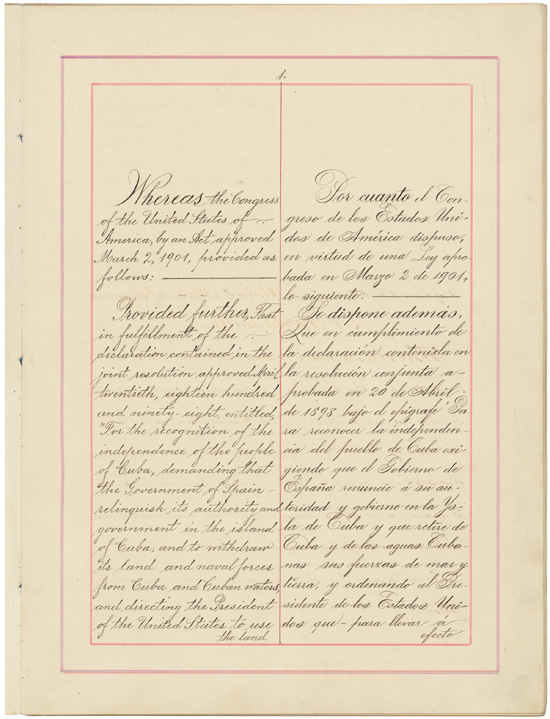
The government of Cuba from 1902 to 1934 sometimes is referred to as a neocolony—that is, a new kind of colony. This period was marked by political instability, public corruption, and popular protest. The United States gained increasing control over Cuba’s economic affairs and began to dominate Cuban trade, especially with the Reciprocity Treaty of 1903.
In 1906, violent protests broke out in Cuba over the disputed outcome of a presidential election. United States troops then returned to Cuba under the terms of the Platt Amendment. A government headed by Charles E. Magoon of the United States ruled Cuba from 1906 to 1909, when the United States returned control of the country to the Cubans. American forces left the country, but the United States retained naval bases on the island.
An uprising broke out among Black Cubans in 1912. The protesters objected to the lack of political opportunity and social advancement for Black people in Cuba. In 1917, a revolt protesting electoral fraud erupted. During both uprisings, the United States sent military forces into the country.
Cuba suffered a severe economic collapse in 1920, when sugar prices rose rapidly, became overinflated, and then suddenly dropped. In 1924, still suffering from the economic collapse, Cubans elected Gerardo Machado president. During his campaign, Machado had attacked the Platt Amendment and promised reforms. But from 1927, he ruled as a dictator, provoking widespread unrest. In August 1933, a general strike and an army revolt forced Machado out of office. A month later, a group of army sergeants, corporals, and enlisted men led by Fulgencio Batista y Zaldívar and a group of university students and professors led a revolt that overthrew the new government. A five-man government briefly ruled the country, and then former university professor Ramón Grau San Martín became president.
The Grau government wanted to reduce U.S. influence in Cuba and make far-reaching changes. It passed a number of popular reforms, including laws that established an eight-hour workday and required all Cuban businesses to employ Cubans for at least half of their total work force. The United States refused to recognize the Grau government. Left- and right-wing groups in Cuba also actively opposed the government.
The Batista era.
Batista forced Grau to resign from office in 1934. Until 1940, Batista ruled Cuba as a dictator through presidents who served in name only. The United States recognized and supported Batista’s government.
In 1934, the United States and Cuba signed two treaties. The 1934 Treaty of Relations canceled the provisions of the Platt Amendment but preserved the terms of the U.S. lease on Guantánamo Bay. The 1934 Reciprocity Treaty confirmed the two countries’ close economic ties. United States investments in Cuba continued to expand during the 1940’s and 1950’s. American interests eventually controlled about 40 percent of Cuba’s sugar production. The United States also continued to be Cuba’s chief trading partner. 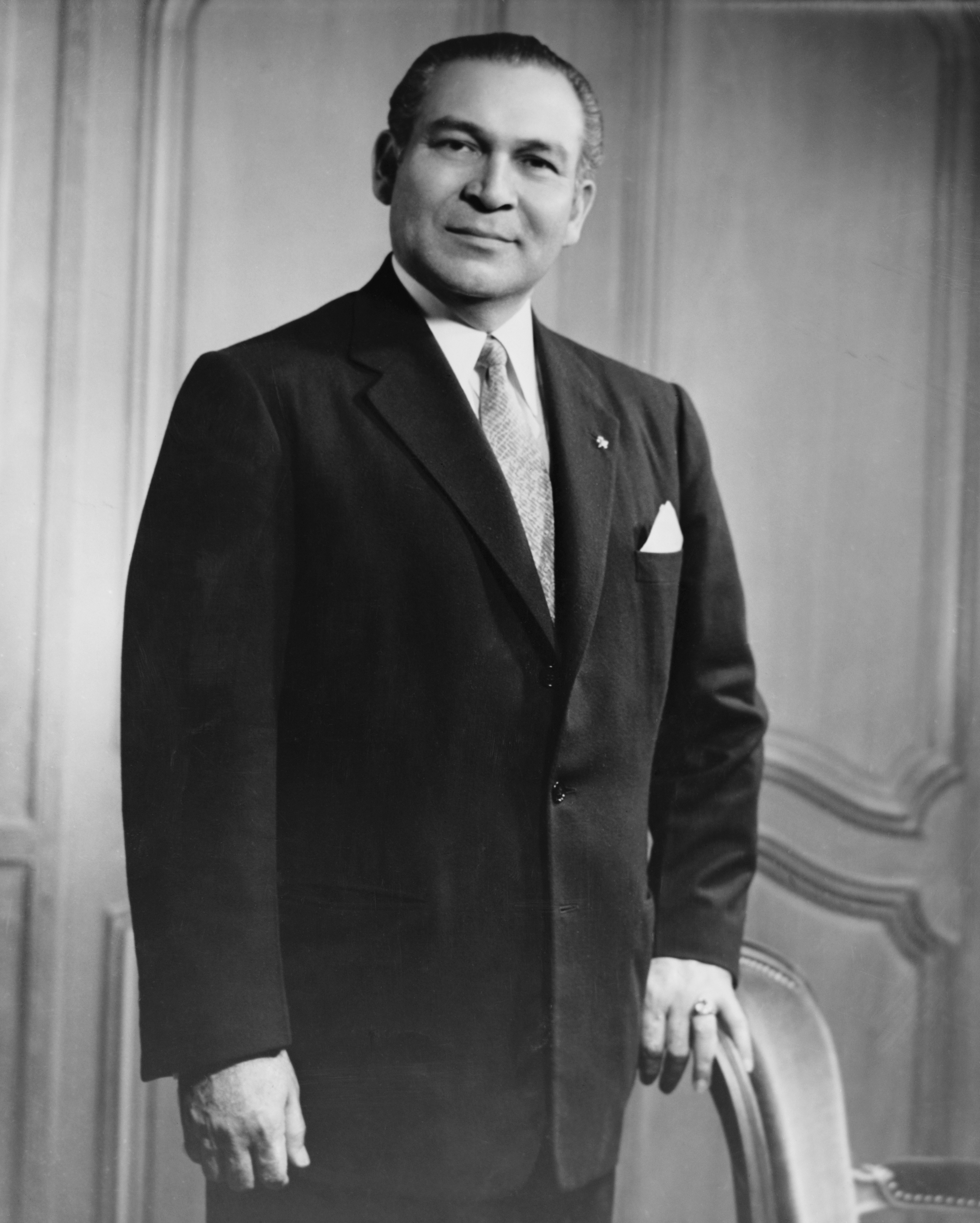
In 1940, Cubans adopted a new constitution and elected Batista president. The constitution prevented Batista from seeking reelection in 1944. Grau, then leader of the Authentic Cuban Revolutionary Party (also known as the Auténticos), was elected president. Another Auténtico, Carlos Prío Socarrás, won the 1948 presidential election.
In 1952, Batista overthrew Prío’s government and ruled Cuba as a dictator once again. Batista encouraged foreign companies, along with gambling and crime enterprises, to build businesses in Cuba. He also began to improve public works. But many Cubans remained unemployed and impoverished, and political conflict expanded across the island. Strikes and demonstrations became common.
The Castro revolution.
On July 26, 1953, Fidel Castro, a young lawyer, tried to start a revolution against Batista by leading an attack on the Moncada army barracks in Santiago de Cuba. Fidel and his brother Raúl were captured and imprisoned. Many of their followers were either imprisoned or murdered. 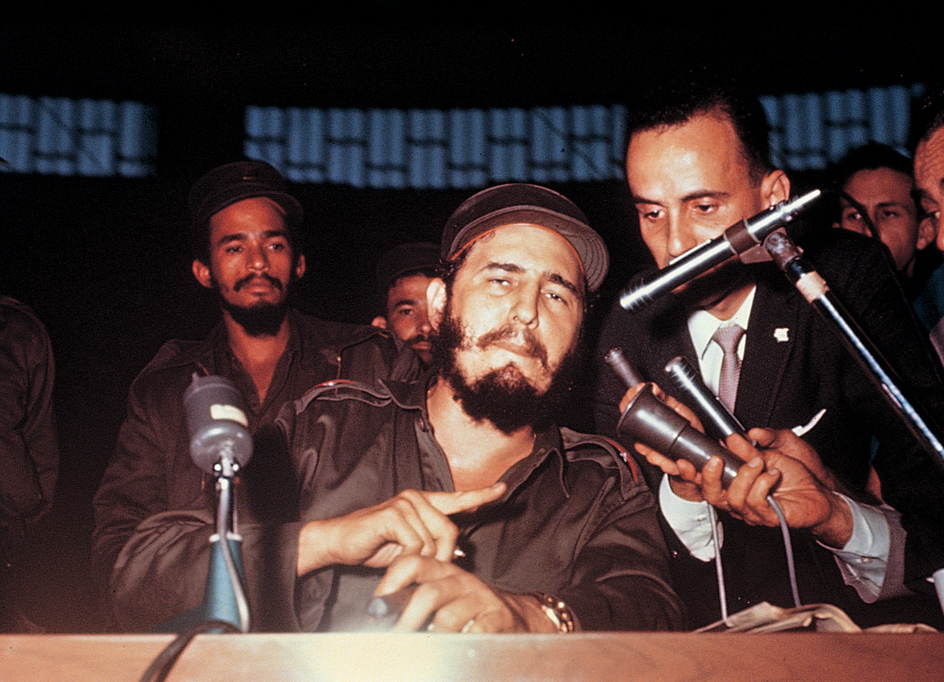
The Castro brothers were released from prison in 1955. They then traveled to Mexico, where they met the Argentine revolutionary Ernesto “Che” Guevara. In 1956, while in Mexico, the brothers organized the 26th of July Movement, named for the date of their first revolt. The revolutionary forces landed in Oriente Province in late 1956. Most of the rebels were imprisoned or killed. However, the brothers and 16 of their followers escaped to the nearby Sierra Maestra mountains.
In 1957, the rebel forces began to wage a guerrilla war against the Cuban government. The same year, university students stormed the presidential palace in an attempt to assassinate Batista. Attempts by the government to crush dissent increased the people’s support of the rebels. Continued poor economic conditions also led to growing support for the rebels, particularly among workers, peasants, students, and the middle class. By mid-1958, Batista’s government had lost the support of the United States and most Cubans.
On Jan. 1, 1959, Batista fled the country. The Castro-led rebel forces then took control of the government. Fidel Castro became prime minister of Cuba. He went on to lead the nation for nearly 50 years, first as prime minister, and later as president. Raúl served as Fidel’s second-in-command, becoming defense minister and leader of Cuba’s armed forces.
The revolutionary leaders did away with the political and military structure of Batista’s government. Many former political officials and military officers were tried and executed. A large number of middle- and upper-class Cubans went into exile in Florida.
The new Cuban government quickly set out to change Cuban relations with the United States. In particular, it sought to reduce U.S. influence on Cuban national affairs. In 1959, for example, the Cuban government seized U.S.-owned sugar estates. As a result, Cuba-U.S. relations quickly became strained. As relations with the United States deteriorated, Cuba developed stronger economic ties with the Soviet Union. In 1960, Castro’s government signed a limited trade pact with the Soviet Union, exchanging sugar for oil. The two nations later expanded their trade.
In June 1960, the Castro government took over American and British oil refineries in Cuba after the refineries refused to process crude oil imported from the Soviet Union. The United States then stopped buying sugar from Cuba. Over the next few months, the Castro government took over all the remaining American businesses in Cuba and accepted Soviet offers to purchase Cuban sugar. In October 1960, the United States placed an economic embargo on Cuba that banned all U.S. exports except medicines and some food products. In January 1961, the United States ended diplomatic relations with Cuba.
The Bay of Pigs invasion.
In April 1961, Cuban exiles sponsored by the United States Central Intelligence Agency (CIA) invaded Cuba at the Bay of Pigs on the south coast. Castro’s forces crushed the invasion and captured most of the exiles. Castro later released many of the exiles to the United States in exchange for nonmilitary supplies. Shortly before the invasion, Castro had declared Cuba’s revolution to be socialist. In the months after the invasion, Cuba’s political system began to follow a Communist model. The political groups supporting Castro were combined and reorganized several times before the Cuban Communist Party that exists today was created in 1965.
The Cuban missile crisis.
Cuban leaders feared another direct U.S. invasion. The Soviet Union offered military aid to Cuba, and Cuba agreed to let the Soviet Union send missiles and materials to build launch sites. In October 1962, the United States learned that Cuba had nuclear missiles in place that could be launched toward American cities. U.S. President John F. Kennedy ordered a naval blockade to halt the further shipment of arms. He demanded that the Soviet Union remove all missiles from the island and dismantle the remaining missile bases. For days, the world stood on the brink of nuclear war. Finally, the Soviet Union removed the weapons under protest from Castro, who had hoped to secure a promise from the United States to remove its embargo. The Soviet action came after Kennedy privately agreed not to invade Cuba.
Social programs.
The Castro government made many changes for the better. It built many new schools and improved old ones, and school enrollments and literacy rates increased dramatically. The government also improved medical and dental care facilities. The number of doctors and other health professionals increased. Health conditions improved, and life expectancy rose. Housing reforms, the introduction of food rationing, and a drive for greater equality led to more opportunities for minority groups and the poor. Women began attending universities and joining the labor force in greater numbers. Black people also received increased educational, employment, and political opportunities. 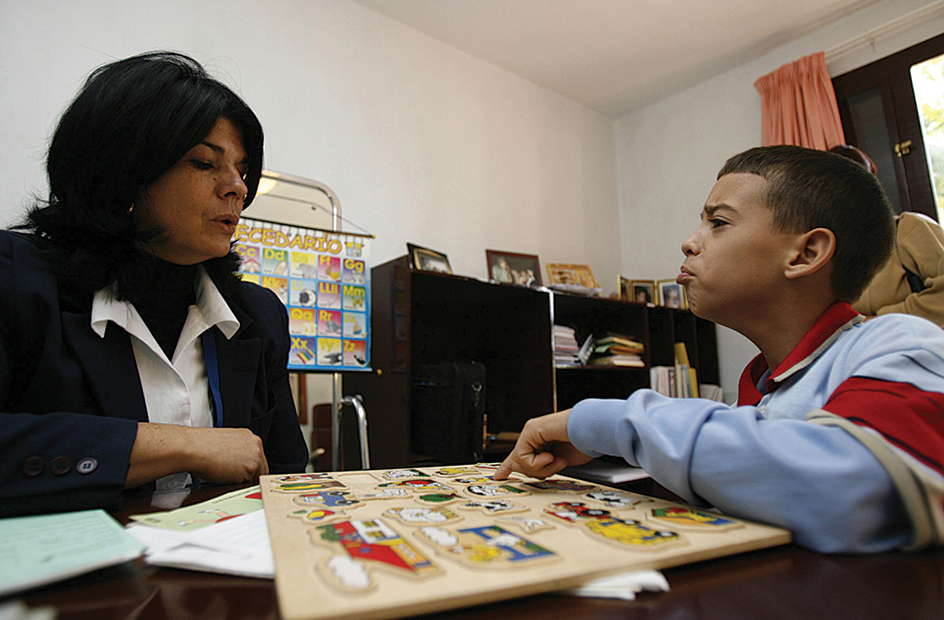
However, other changes were not as good. The government jailed many of its opponents. Critics charged that the Cuban people lacked many political and economic freedoms. Until the 1970’s, government-run companies had an equal-pay system that paid similar wages to many workers regardless of their position or experience level.
Foreign relations.
In the 1960’s, Castro and Che Guevara tried to spread revolution throughout Latin America, mainly by supplying military aid to guerrilla groups in several Latin American countries. In the 1970’s, Cuba also sent troops and civilian military advisers to aid new governments in Angola and Ethiopia, in Africa. The Soviet Union eventually provided most of the military supplies for Cuba’s African operations. Cuba withdrew its last troops from Africa in 1991, after defeating South African troops in Angola. See Angola (History).
Relations between Cuba and the United States remained strained, despite occasional signs of improvement. Partial diplomatic relations between the two countries were restored in 1977. The United States kept its trade embargo, imposed in 1960, in place. During the 1990’s, the United States passed legislation, including the Helms-Burton Act of 1996, to broaden and tighten trade sanctions against Cuba. In 2000, however, the U.S. Congress passed legislation allowing cash sales of U.S. food and medicine to Cuba.
Another serious issue between Cuba and the United States involved the immigration of Cubans to the United States. During the first decade after the revolution, hundreds of thousands of Cubans left the country because they opposed Castro or were dissatisfied with their social and economic conditions. Most of these people settled in the United States. From 1966, the United States had a policy of giving political asylum to all Cubans who reached its shores. It also offered permanent resident status to Cubans who had been in the United States for a certain amount of time, initially two years.
Another wave of immigration took place in 1980, when more than 125,000 Cubans moved to the United States. Most of them traveled through the western port of Mariel, Cuba. Following yet another wave of immigration, of about 35,000 people in 1994, Cuba and the United States reached an immigration agreement. The United States consented to admit at least 20,000 new legal immigrants from Cuba annually. It also agreed to return to Cuba any Cubans caught at sea trying to migrate illegally. In return, Cuba pledged to do more to prevent illegal departures.
Economic troubles.
In the late 1980’s, non-Communist governments replaced Communist ones in most Eastern European nations. In 1991, the Soviet Union was dissolved and its Communist government was replaced. As a result, Cuba lost its most important source of trade and financial support, and the economy suffered greatly. To ease the economic crisis, the Cuban government undertook limited reforms that loosened state control over parts of the economy. In an attempt to stimulate foreign investment in Cuba, the government also sought to improve commercial relations with Canada and with European and Latin American nations.
The early 2000’s.
In late 2000, relations between Cuba and the United States began to worsen. The United States again tightened its trade embargo. Cuba’s government began a so-called Battle of Ideas. It sought to strengthen youths’ commitment to Cuba’s political system through educational and cultural campaigns. In 2002, former U.S. President Jimmy Carter traveled to Cuba to try to improve international relations. Carter unsuccessfully urged Cuba to adopt democratic reforms and called on the United States to end its trade embargo. 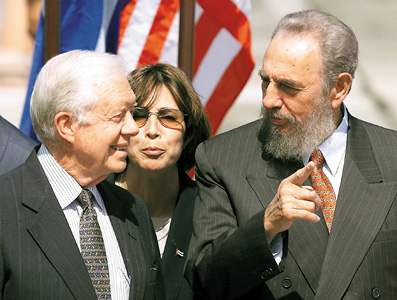
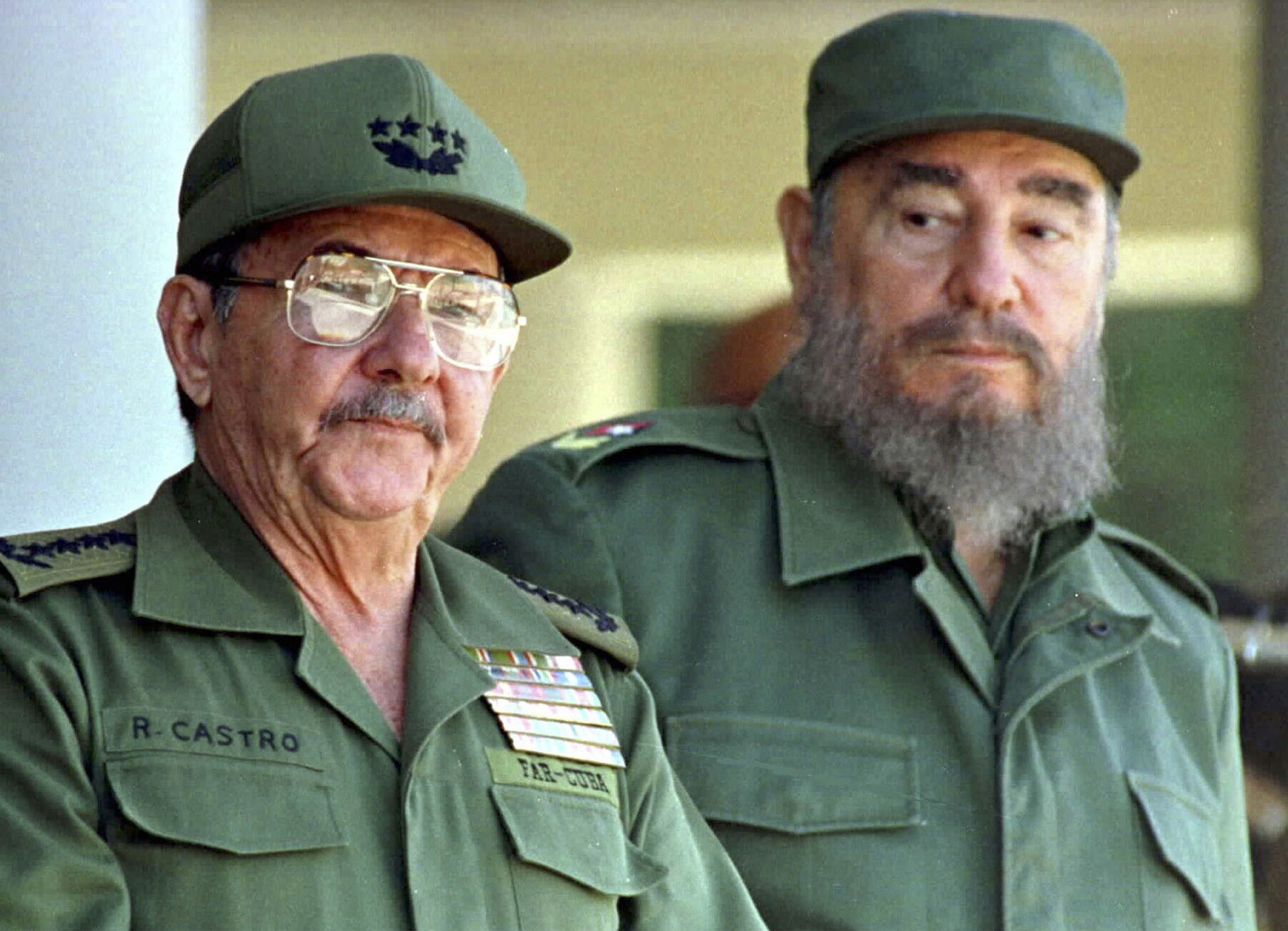
In 2006, Fidel Castro became seriously ill and gave temporary control of the government to Raúl. In 2008, Fidel resigned as president of Cuba and the National Assembly elected Raúl to succeed him. Raúl’s government soon announced a number of economic reforms. For example, it lifted restrictions on consumer access to some goods, allowed farmers more control over land, and permitted self-employed people to hire additional staff.
A number of serious hurricanes struck Cuba in the early 2000’s. In 2008, Hurricanes Gustav and Ike caused billions of dollars’ worth of damage to Cuba. Hundreds of thousands of homes were destroyed or damaged, and many crops were devastated. Other major storms included Hurricane Sandy, in 2012, and Hurricane Irma, in 2017. Both proved fatal and highly destructive.
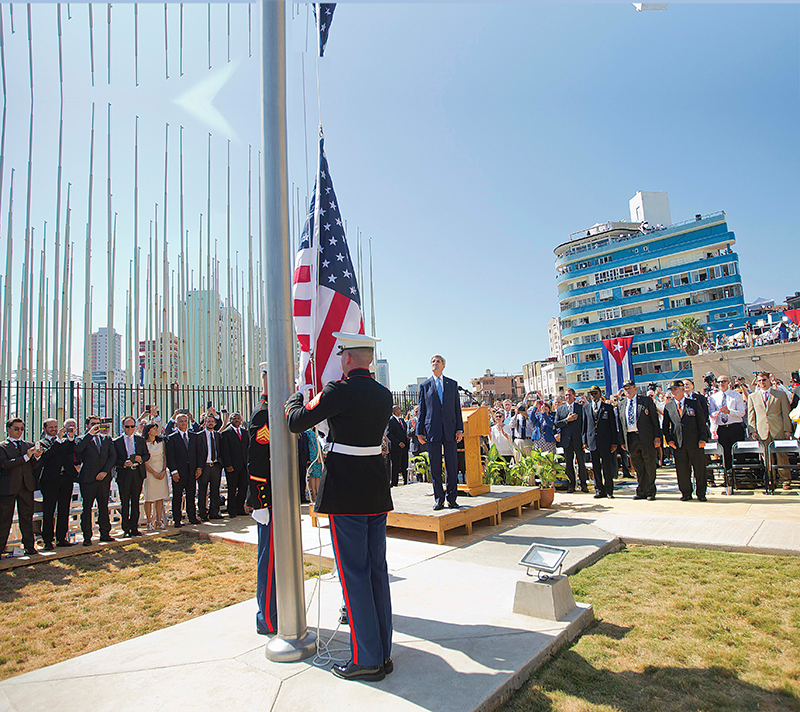
Relations between Cuba and the United States improved at times in the early decades of the 2000’s. For example, during the administrations of U.S. Presidents Barack Obama and Joe Biden, the U.S. government eased some economic restrictions and travel rules regarding Cuba. However, the 1960 trade embargo remained in place. In 2015, Cuba and the United States reopened their foreign embassies in each other’s capitals, restoring diplomatic relations after more than 50 years. In 2016, Obama visited Cuba and met with Raúl Castro. It was the first visit by a sitting U.S. president in almost 90 years.
Fidel Castro died in 2016, at the age of 90. In 2018, after serving two terms, Raúl Castro stepped down as president. The National Assembly elected First Vice President Miguel Díaz-Canel to succeed Raúl. In 2019, Cubans voted to approve a new national constitution that provided for some political, economic, and other reforms. In 2021, Cuba’s government announced the opening of more economic sectors to private business.
